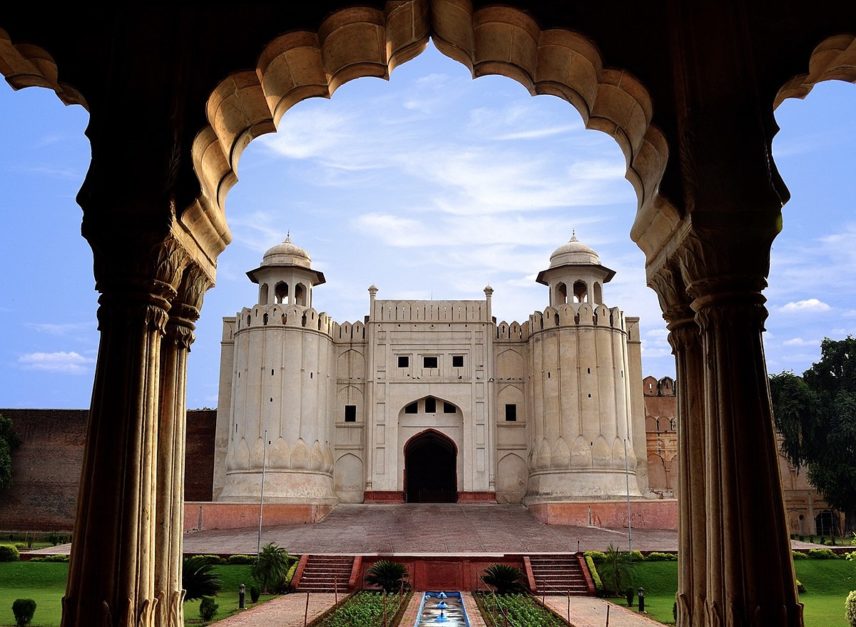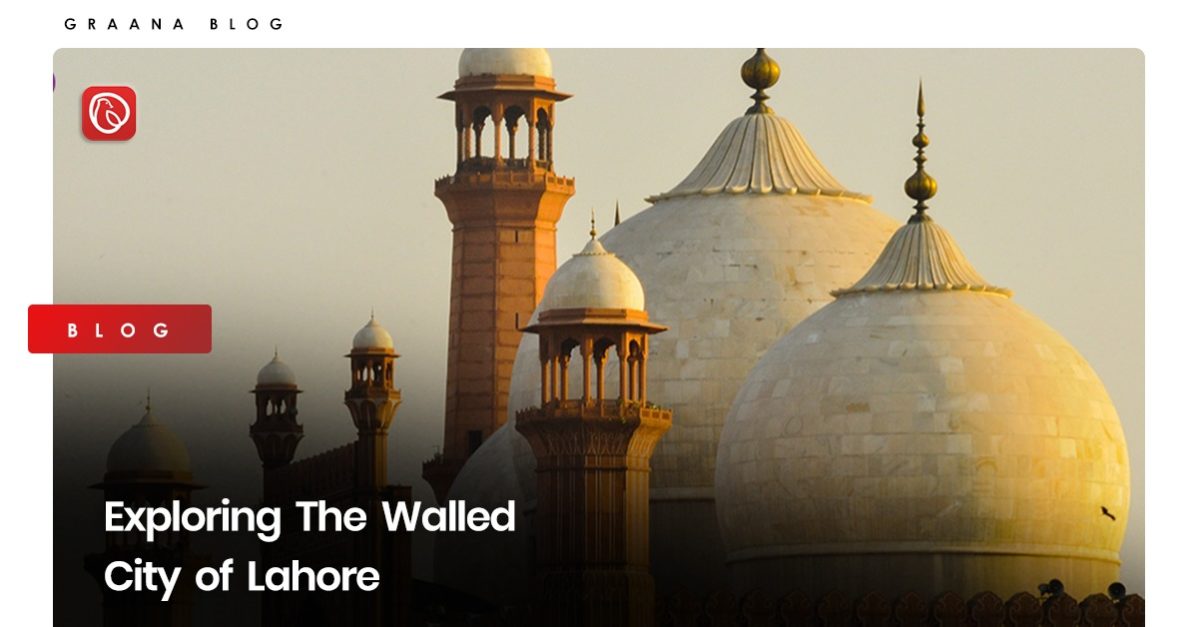The Walled City of Lahore, also known as the “Old City” or “Anderoon Shehr,” is the area of Lahore, Punjab, Pakistan, that was protected by a city wall during the Mughal era. Due to the original building material of the walls, it is also known as the Mud City (Kacha Kot), and it has its roots in the ancient history of India.
Originating around 1000 CE, the city was founded within the western section of the Walled City, enclosed by a mud wall during the medieval period. This area stands as the cultural hub of the Punjab region.
Graana.com brings you a concise guide to the walled city of Lahore.
Overview of the Walled City of Lahore
The Walled City of Lahore has a population of 200,000 people and an area that spans 256 hectares. Shortly after annexing Punjab in 1849, the British tore down the city walls and replaced them with gardens, some of which are still in use today.
The ancient city is connected to the rest of the metropolitan network by the Circular Road. The attractive streets of the inner city have been preserved entirely; nonetheless, the fast destruction and unlawful reconstruction that is taking place across the city are undermining the historical importance of the area.
There has been some encroachment on historically significant structures. The city’s few remaining historic homes often have two or three floors, brick facades, flat roofs, intricately carved wooden balconies, and overhanging windows, and are among the city’s few remaining architectural treasures.
History of the walled city of Lahore

It is possible that the first structures in the city of Lahore were erected four thousand years ago, around the year 2000 B.C.E. This would position the ancient city of Lahore in the same time period as the Indus Valley Civilization, which was located on the northwest coast of India and Pakistan.
The invasion of the Mughals and the reign of the five great Mughal leaders—Barbur, Humayun, Akbar, Jahangir, and Shah Jahan—had the biggest influence on the design of the Walled City of Lahore.
This was because the Mughals had previously ruled the region. They are credited for establishing the Mughal Empire’s reputation as being home to some of the most accomplished royal architects and builders in the history of the world.
Gates of Lahore
The thirteen gates of Lahore include Akbari Gate, Bhati Gate, Delhi Gate, Kashmiri Gate, Lohari Gate, Masti Gate, Mochi Gate, Mori Gate, Roshnai Gate, Shahalmi Gate, Shairanwala Gate, Taxali Gate, and Yakki Gate.
Yakki Gate was the most recent gate to be constructed. With the exception of the Roshnai Gate, all of the gates endured until the nineteenth century, when the British, in an effort to de-fortify the city, destroyed all of the gates.
During the riots that occurred in 1947, Shahalmi Gate was completely destroyed, whereas Akbari Gate had already been dismantled for repairs but was never restored. Bhati Gate, Delhi Gate, Kashmiri Gate, Lohari Gate, Roshnai Gate, and Shairanwala Gate are the only six of the original thirteen gates that are still standing today.
Places to visit near the walled city of Lahore
Here is a list of Places to visit near the walled city of Lahore.
Lahore Fort

Within the confines of the Walled City of Lahore, the importance of the Lahore Fort cannot be overstated. Visitors to the walled city of Lahore will find that its large lawns, locations that were formerly used as observatories, quarters for ladies of the royal harem, and Diwan-e-Khas for distinguished audiences are all noteworthy features of the city.
Particularly noticeable at the Lahore Fort are the architectural elements made of marble that date back to the Mughal period.
Badshahi Mosque
Anyone who travels to the Walled City of Lahore should not miss out on the opportunity to see the stunning Badshahi Mosque, which is located right next to the Lahore Fort. Marbles of pure white colour and appealing red sandstone make up its composition. Large open courtyards are also found here, and they are typically packed with worshippers.
Under the archways where people may be seen sitting and reciting the Holy Quran, the marble has been carved into a number of different designs. The acoustics of the mosque is also an intriguing feature to take into consideration.
These are so powerful that even if someone is whispering in the most inaccessible part of the room, it can be heard in the other most inaccessible part of the room.
Wazir Khan Mosque

As one makes their way from the Delhi Gate, they will run into the Wazir Khan Mosque. It is one of the finest examples of Mughal archietcure, and it is elegantly planned and covered with colourful tiles.
It is considered to be one of the most beautiful buildings ever built. Even though it is far smaller in size than the Badshahi Mosque, every nook and crevice of this mosque has been meticulously kept and organised.
The architectural beauty of the mediaeval walled city of Lahore is enhanced by the addition of this mosque, which also serves as an interesting destination for travellers to check out.
Markets
Lahore’s allure lies in the fact that its bustling and dazzling bazaars are accessible at any time of the day. These include the food markets in addition to other shops selling a variety of merchandise and products.
Akbari Mandi, Pakistan Cloth Market, Azam Cloth Market, Sheikhupura Bazaar, Lahnga Mandi, Moti Bazaar, Kinari Bazaar, Kasera Bazaar, Waan Market, Bangle Market, Shah Almi Bazaar, fish market, birds market, Pappar Mandi, Gumti Bazaar, Sarafa Bazaar, Siriyan Wala Bazaar, Sheesha Moti Bazaar and many other make this place a living cultural hub and a city that never sleeps.
You may go to any of the chowks in old Lahore at any time, but notably the ones in Lohari and Rang Mehal, and you will find the nightlife there to be quite promising.
In Akbari Mandi, the world’s biggest spice market and the place where the business of selling spices first got its start, you may also find the origins of the British East India Company.
Walled City of Lahore Authority
The WCLA was established in 2012 with the mandate to preserve the cultural heritage of the Walled City and improve the lives of its residents. It has undertaken a number of initiatives to achieve this, including:
- Restoring historical monuments and buildings
- Improving infrastructure and public services
- Promoting tourism and economic development
- Providing social services to residents
- Raising awareness about the importance of cultural heritage
The WCLA has made significant progress in its work, but there are still many challenges ahead. The Walled City is a densely populated area with a complex history, and there are competing interests that need to be balanced. The WCLA is working to develop a sustainable approach to conservation and development that will benefit both the residents of the Walled City and the wider community.
Here are some of the WCLA’s key achievements:
- Restoration of the Lahore Fort, Badshahi Mosque, and other historical monuments
- Improvement of water supply, sanitation, and waste management systems
- Construction of new schools and hospitals
- Creation of new parks and open spaces
- Development of a tourism master plan
- Launch of a number of cultural events and initiatives
The WCLA is a vital organization that is playing a key role in the preservation and revitalization of the Walled City of Lahore. Its work is essential for ensuring that this unique and important heritage site is preserved for future generations.
For more informational content, visit Graana blog.




